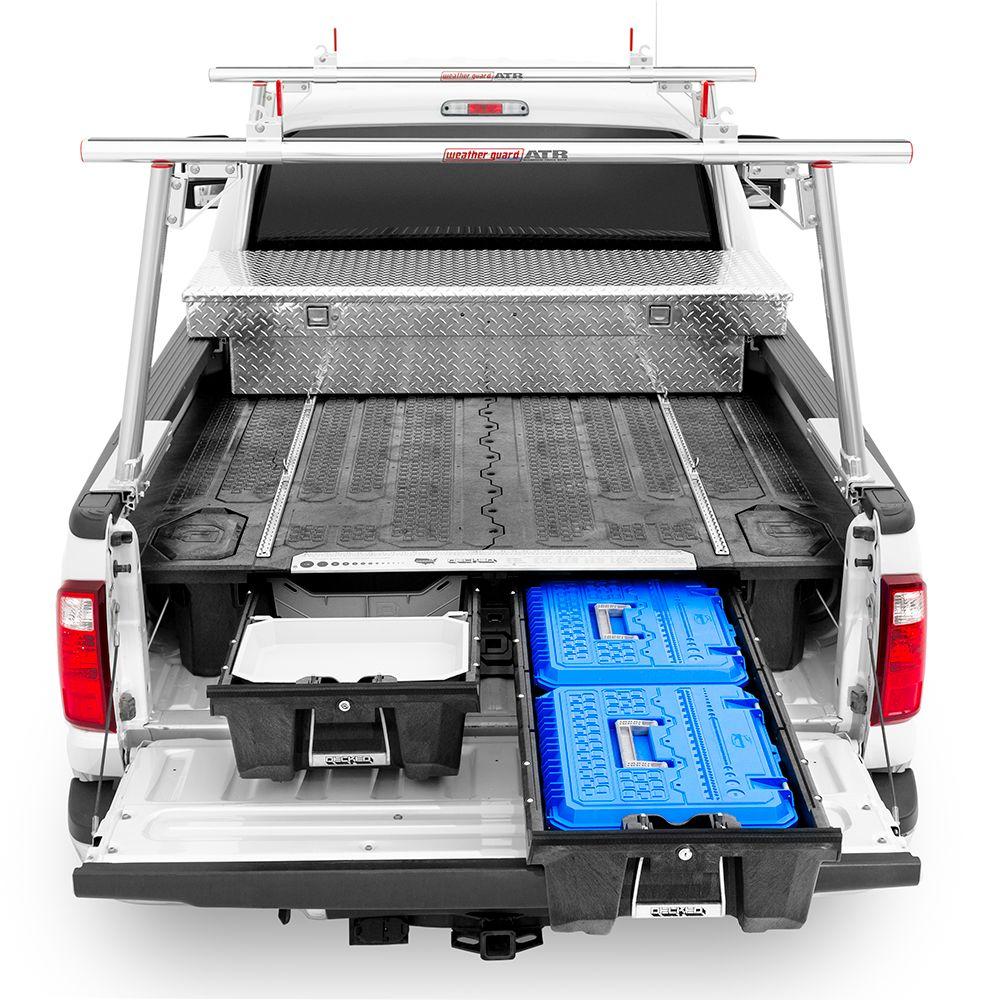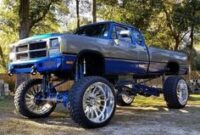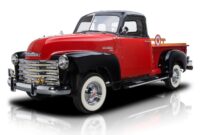Tool Boxes For Pickup Trucks: The Ultimate Guide to Organization, Security, and Efficiency pickup.truckstrend.com
I. Introduction: Your Mobile Workshop’s Command Center
For anyone who relies on their pickup truck for work, hobbies, or simply the demands of daily life, a scattered collection of tools, equipment, and gear is a common frustration. From the contractor needing quick access to power tools on a job site to the weekend warrior transporting recovery gear for an off-road adventure, efficiency and organization are paramount. This is where the unsung hero of the truck bed comes into play: the pickup truck tool box.
Tool Boxes For Pickup Trucks: The Ultimate Guide to Organization, Security, and Efficiency
More than just a simple container, a well-chosen pickup truck tool box transforms your vehicle into a highly organized, secure, and efficient mobile workshop. It provides a dedicated, weather-protected space for your essential items, ensuring they are always within reach, safe from theft, and shielded from the elements. This comprehensive guide will delve into everything you need to know about tool boxes for pickup trucks, helping you make an informed decision that elevates your truck’s utility and your productivity.
II. Why a Pickup Truck Tool Box is an Essential Investment
Investing in a quality tool box for your pickup truck offers a multitude of benefits that extend far beyond mere storage:
- Enhanced Organization: Say goodbye to rummaging through a cluttered truck bed. Tool boxes feature compartments, trays, and dividers that allow for systematic organization of tools, hardware, and equipment. This not only saves time but also reduces wear and tear on your tools by preventing them from clanging against each other.
- Superior Security: Tools and equipment represent a significant investment. A robust truck tool box, equipped with sturdy locks and secure latch mechanisms, provides a formidable deterrent against theft, protecting your valuable assets whether your truck is parked on a job site or in your driveway.
- Tool Protection: Exposure to sun, rain, dust, and road grime can quickly degrade tools and equipment. A well-sealed tool box shields your items from the harsh realities of the outdoors, preventing rust, corrosion, and damage, thereby extending their lifespan.
- Increased Efficiency: When every tool has its place, finding what you need becomes instantaneous. This dramatically cuts down on wasted time searching for items, allowing you to complete tasks more quickly and efficiently. For professionals, this translates directly into increased productivity and profitability.
- Professional Image: A tidy and organized truck reflects positively on its owner. For contractors and tradespeople, a clean, well-equipped vehicle conveys professionalism and reliability to clients.
- Optimized Cargo Space: While adding a box, it paradoxically helps optimize the remaining bed space by consolidating loose items, often freeing up the rest of the bed for larger cargo.
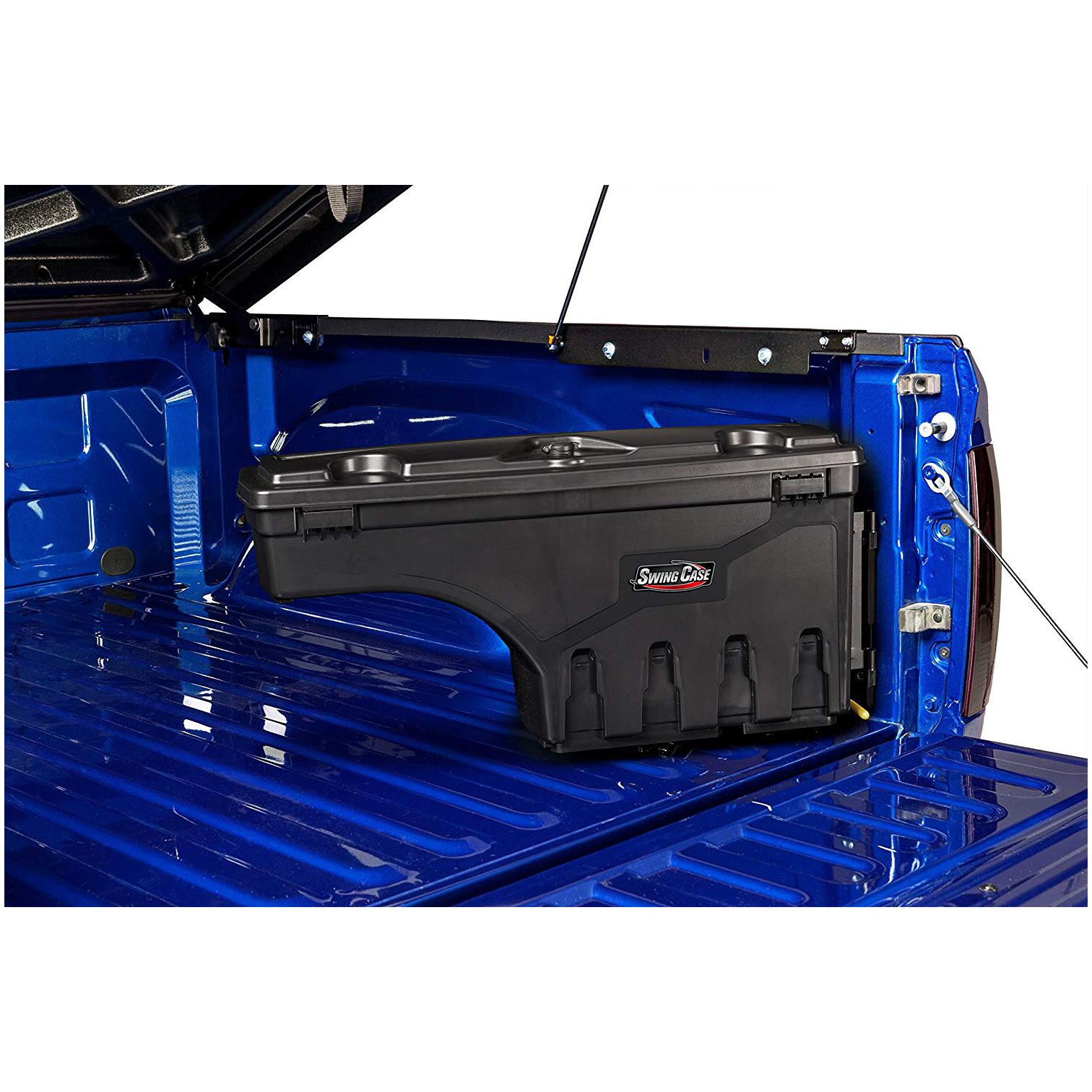
III. Navigating the Landscape: Types of Pickup Truck Tool Boxes
The market offers a diverse range of tool box styles, each designed to suit specific needs and truck configurations. Understanding the common types is crucial for making the right choice:
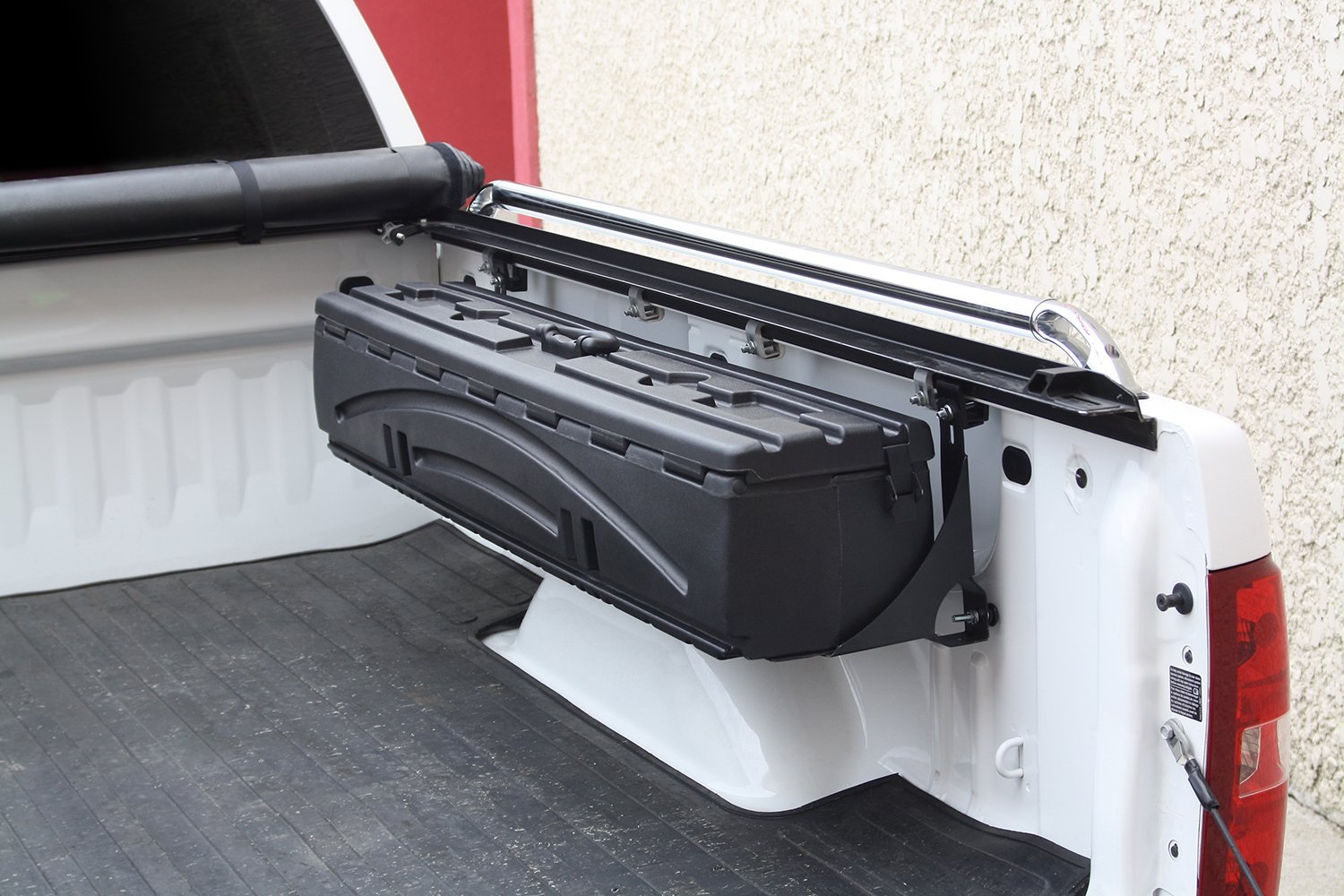
- Cross-Bed (Crossover) Boxes: These are the most popular and recognizable type, spanning the width of the truck bed and resting on the bed rails, typically near the cab. They offer a large storage area and keep the majority of the bed floor clear. Most come with one or two lids.
- Pros: Excellent storage capacity, easy access from either side of the truck, leaves bed floor open for long items.
- Cons: Can obstruct rear visibility slightly, reduces bed length for very long items.
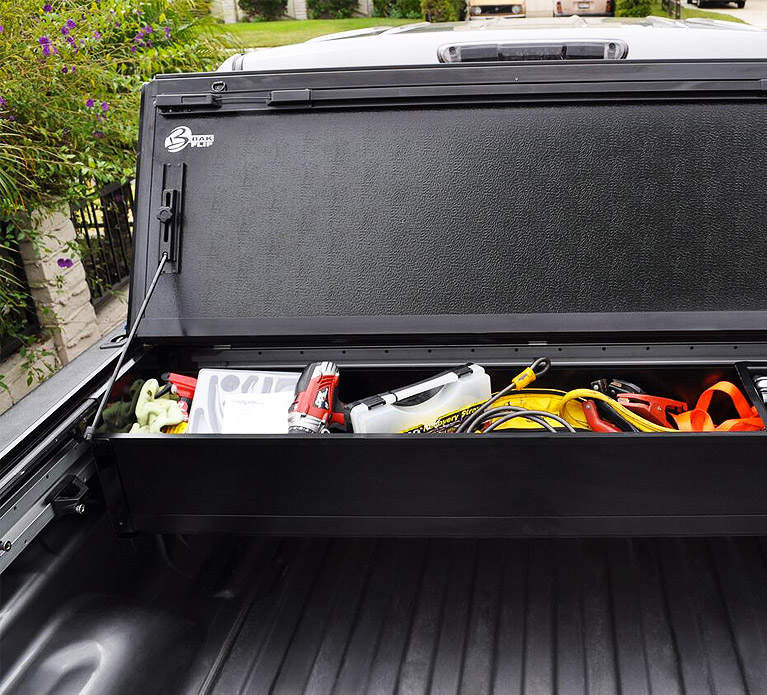
- Side-Mount (Saddle) Boxes: Mounted along one or both bed rails, these boxes run lengthwise. They are narrower than crossover boxes but can be quite long.
- Pros: Maintains full bed length for cargo, good for organizing smaller tools and parts, less impact on rear visibility.
- Cons: Less overall cubic storage than a crossover, can be more challenging to access items deep inside from the ground.
- Wheel Well (Pork Chop) Boxes: These clever boxes are designed to fit snugly over the truck’s rear wheel wells, utilizing often-wasted space.
- Pros: Maximizes unused space, maintains full bed length and width, low profile.
- Cons: Smaller storage capacity, typically only accessible from the side or rear of the truck.
- Chest Boxes: These are large, standalone boxes that sit on the floor of the truck bed. They are often used when maximum storage capacity is needed and the bed needs to be occasionally cleared.
- Pros: Very high storage capacity, can be removed relatively easily (if not bolted down), can be placed anywhere in the bed.
- Cons: Takes up significant bed floor space, can be heavy when full, requires strong tie-downs or bolting for security.
- Under-Bed Boxes: Mounted underneath the truck bed or chassis, these boxes are ideal for securing items out of sight and are popular for utility bodies or flatbeds.
- Pros: Completely frees up bed space, highly secure and discreet.
- Cons: Limited capacity, often harder to access, requires specific mounting hardware and truck configuration.
- Drawer Systems/Slides: These are integrated units that slide out from the bed, revealing multiple drawers. They offer exceptional organization and often have a load-bearing top surface.
- Pros: Superior organization, ergonomic access, often weather-sealed, top surface can be used for cargo.
- Cons: Significant investment, permanently occupies bed space, heavy.
Material Matters: The material of your tool box dictates its durability, weight, and resistance to environmental factors:
- Aluminum: Lightweight, highly resistant to rust and corrosion, popular for its sleek appearance and ease of handling. Generally more expensive than steel or plastic.
- Steel: Very strong and durable, offering excellent security. However, steel is heavier and susceptible to rust if not properly coated or maintained. Available in various gauges; thicker gauge means more strength.
- Plastic/Polyethylene: The most lightweight and often most affordable option. Resistant to dents and rust, but generally less secure and durable against impacts compared to metal. Often used for lighter-duty applications.
IV. Choosing Your Perfect Partner: Key Considerations
Selecting the right tool box involves a careful evaluation of several factors:
- Truck Compatibility & Size: This is paramount. Measure your truck bed’s length, width between the rails, and the height from the bed rail to the top of the cab to ensure proper clearance, especially for crossover boxes. Consult the tool box manufacturer’s fitment guide for your specific truck make, model, and year.
- Material Selection: Match the material to your needs. If you prioritize lightweight and rust resistance, aluminum is ideal. For maximum security and brute strength, steel is better, provided you’re prepared for its weight and potential rust issues. Plastic is good for light use and budget-friendliness.
- Security Features: Look for robust locking mechanisms (e.g., push-button locks, paddle handles, multiple locking points), heavy-duty latches, and possibly a reinforced lid. Some premium boxes offer integrated alarm systems or compatibility with truck central locking.
- Weatherproofing: Your tools need protection from the elements. Inspect the seals (weather stripping or gaskets) around the lid, ensuring they are thick and form a tight barrier. Recessed lids and rain gutters can further prevent water intrusion.
- Storage Capacity & Organization: Consider the volume (cubic feet) you need. Look for features like removable trays, adjustable dividers, and built-in compartments that help organize smaller items and prevent tools from shifting during transit.
- Mounting Style: Most tool boxes are secured using J-hook clamps that grip the bed rails, allowing for non-invasive installation. Some heavier-duty boxes or those intended for permanent installation may require drilling into the truck bed. Decide if you need a permanently mounted solution or one that can be easily removed.
- Accessibility: Consider how you’ll access your tools. Single-lid boxes open wide for full access, while dual-lid boxes allow access from either side. Some designs offer a full-width opening for larger items.
- Budget: Tool boxes range widely in price, from a couple of hundred dollars for basic plastic models to over a thousand for premium aluminum or integrated drawer systems. Determine your budget and balance it against the features and durability you require.
V. Installation: Getting Your Box Ready for Action
While often straightforward, proper installation ensures your tool box is secure and functions correctly.
- Safety First: Always read the manufacturer’s instructions thoroughly. Ensure your truck is parked on a level surface with the parking brake engaged.
- Tools Required: Typically, you’ll need a wrench or socket set for tightening J-hooks or bolts, a tape measure, and a marking tool. If drilling is required, you’ll need a drill and appropriate drill bits.
- Positioning: Carefully place the tool box in your truck bed. For crossover boxes, ensure it’s centered and has adequate clearance from the cab, especially when the truck flexes or turns.
- Securing the Box: The most common method involves J-hook clamps that hook under the bed rail and tighten from inside the box. Position these clamps evenly for stability. If your box requires drilling, carefully mark the spots, drill pilot holes, and then secure with bolts. Avoid overtightening, which can warp the box or damage the bed.
- Final Checks: Once secured, try to rock the box to ensure it’s stable. Open and close the lid(s) to confirm smooth operation and a tight seal. Double-check all mounting hardware after your first few drives to ensure everything remains tight.
VI. Maximizing Utility and Longevity: Tips & Maintenance
A little care goes a long way in ensuring your tool box serves you well for years.
- Smart Organization: Don’t just throw tools in. Group similar tools together. Use smaller plastic bins or custom foam inserts within the box to prevent items from shifting and rattling. Label compartments or bins for quick identification.
- Regular Cleaning: Periodically clean the interior and exterior of your tool box. Dirt and grime can accumulate, especially in the bed, and impact seals or moving parts. Use mild soap and water.
- Lubrication: Apply a silicone spray or light grease to hinges, locks, and latch mechanisms every few months to ensure smooth operation and prevent seizing.
- Seal Inspection: Regularly check the weather seals around the lid(s). Over time, these can degrade, crack, or become compressed. Replace them if they show signs of wear to maintain water and dust resistance.
- Weight Distribution: Avoid overloading one side of the box, as this can put uneven stress on the mounting hardware and potentially affect your truck’s handling. Distribute heavier items evenly.
- Periodic Security Check: Make it a habit to check the tightness of your mounting hardware (J-hooks or bolts) every few months, especially after heavy use or off-roading. Vibrations can cause them to loosen.
VII. Common Challenges and Practical Solutions
Even with the best tool box, challenges can arise. Here’s how to address them:
- Theft Risk:
- Solution: Invest in a box with high-security locks (e.g., multiple locking points, pick-resistant cylinders). Consider adding a separate padlock for extra security. For high-value contents, an internal alarm system or GPS tracker can be invaluable. Always lock your box, even for short stops.
- Water Leaks:
- Solution: Most leaks occur due to worn or improperly seated weather seals. Inspect and clean the seals regularly. If damaged, replace them. Ensure the lid latches tightly and is properly aligned. Some users add a bead of silicone sealant around the base where it meets the bed rails, though this makes removal harder.
- Rust/Corrosion (for steel boxes):
- Solution: Choose a high-quality powder-coated steel box. Regularly clean and wax the exterior. Promptly touch up any chips or scratches in the paint to prevent rust from forming. Consider aluminum if rust is a major concern in your climate.
- Poor Fit:
- Solution: This is best prevented by meticulous measurement and consulting fitment guides before purchase. If a minor fit issue occurs, some adjustments to mounting clamps or shims might help. For significant issues, contact the seller for a return or exchange.
- Weight Issues:
- Solution: Be mindful of your truck’s payload capacity. Don’t overload the box with excessively heavy items, especially if you regularly carry other heavy cargo. Distribute weight evenly within the box and the truck bed.
VIII. Price Guide: Understanding the Investment
The price of a pickup truck tool box varies significantly based on type, material, brand, features, and size. The table below provides a representative estimated price range; actual prices may differ.
| Type of Tool Box | Material | Key Features | Estimated Price Range (USD) |
|---|---|---|---|
| Cross-Bed (Crossover) | Aluminum | Lightweight, rust-resistant, single/dual lid, gas struts | $300 – $800+ |
| Cross-Bed (Crossover) | Steel | Heavy-duty, robust security, powder-coated, single/dual lid | $250 – $700 |
| Cross-Bed (Crossover) | Plastic/Poly | Lightweight, budget-friendly, impact-resistant | $150 – $400 |
| Side-Mount (Saddle) | Aluminum | Space-saving, weather-sealed, often narrower | $250 – $600 |
| Side-Mount (Saddle) | Steel | High security, durable, powder-coated | $200 – $550 |
| Wheel Well (Pork Chop) | Aluminum/Steel/Plastic | Utilizes unused space, compact, specific fit | $150 – $450 (per box) |
| Chest Box | Aluminum | Max capacity, heavy-duty handles, removable | $400 – $1000+ |
| Chest Box | Steel | Extreme durability, high security, often with casters | $350 – $900 |
| Drawer System/Slides | Steel/Aluminum | Integrated drawers, heavy-duty slides, full bed utilization | $1000 – $3000+ |
| Under-Bed | Steel/Aluminum | Discreet storage, often lockable, specific mounting | $200 – $600 (per box) |
Disclaimer: Prices are estimates and can vary significantly based on brand, specific features (e.g., locking mechanisms, internal organization, finish), retailer, and geographic location. Sales and promotions can also impact final pricing.
IX. Frequently Asked Questions (FAQ)
- Are truck tool boxes universal?
No, not typically. While some might fit a range of trucks, most are designed for specific bed sizes (e.g., full-size, mid-size) and truck configurations (e.g., over-the-rail, flush mount). Always check the fitment guide for your specific truck make, model, and year. - What’s the best material for a truck tool box?
It depends on your priorities. Aluminum is best for lightweight, rust-resistant, and good security. Steel offers maximum security and durability for heavy use but is heavier and requires more maintenance to prevent rust. Plastic is the most affordable and lightweight option, suitable for lighter-duty use. - How do I prevent theft?
Choose a tool box with robust, integrated locks and sturdy latches. Consider adding a high-quality padlock for extra security. Ensure the box is properly secured to the truck bed (e.g., with strong J-hooks or bolts). Never leave your tool box unlocked, even for a moment. - Will a tool box affect my truck’s fuel economy?
Potentially. Adding weight and altering the aerodynamics of your truck bed can slightly decrease fuel efficiency. However, the impact is usually minimal for standard tool boxes and is often outweighed by the benefits of organization and security. - Can I install a truck tool box myself?
Yes, most standard tool boxes are designed for DIY installation using common hand tools. They typically come with J-hook clamps that secure the box to the bed rails without drilling. Always follow the manufacturer’s instructions carefully. - How do I keep water out of my tool box?
Ensure the tool box has quality weather seals (gaskets or rubber stripping) around the lid. Check these seals regularly for wear and replace them if necessary. Make sure the lid latches tightly and is properly aligned when closed. Some boxes feature recessed lids or rain gutters to direct water away. - Do they come with internal organization?
Many tool boxes, especially cross-bed and chest types, come with a sliding tray for smaller items. Some premium models offer more advanced internal organization like dividers, multiple drawers, or custom inserts. You can also purchase aftermarket organizers to customize the interior.
X. Conclusion: Your Trusted Companion on the Road
A pickup truck tool box is far more than a simple storage container; it’s an essential upgrade that transforms your truck into a more efficient, secure, and professional mobile workspace. By providing dedicated, weather-protected, and secure storage, it safeguards your valuable tools and equipment, saves you time, and enhances your overall productivity.
From understanding the various types and materials to considering key features like security and weatherproofing, making an informed choice ensures your investment pays dividends. With proper installation and regular maintenance, your pickup truck tool box will stand as a reliable companion, ready to support you on every job, adventure, or errand, ensuring you’re always prepared for whatever the road throws your way.
